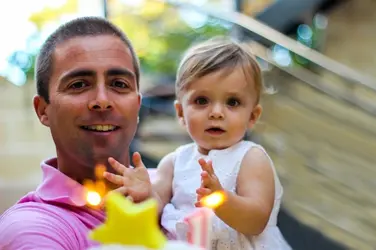Another factor to consider here is that DOF is not actually a very complete measure of how "creamy" a background is.
A 200mm lens at 20 feet away will have almost the same DOF as a 50mm lens at 5 feet away. However, despite DOF being almost identical, the 200mm shot will still look MUCH MUCH "creamier" the background.
Check out the image on this page I am linking:
Bokeh and Focal Length Test 2 12Jun2012 | Flickr - Photo Sharing!
Look down the photos on the left or right side. All of those photos on a given side have almost identical depth of field. The range of stuff in focus is about the same. That tree is pretty much equally out of focus in every one of the images (if you were to take the tree in the 300mm shot and scrunch it down in photoshop, it would be almost pixel-for-pixel identical to the image of the tree in the 24mm shot). BUT, the bokeh is completely different. In the 300mm shot, the background is so magnified that it looks much "Creamier" despite not being really any less in focus than it is in the 24mm shot.
So since the OP is interested in the portrait "creamy look," it is important to keep in mind that DOF is not the only thing that matters in achieving that look or not. DOF as determined by physics and calculators, etc. doesn't tell the whole story by any means.
So one way to achieve what he wants to do (get more of the people in focus while leaving the background as creamy as possible) would be to use a longer focal length with a slightly smaller aperture, and stepping further back. The result would be somewhat increased DOF due to the aperture (one-ish stop would be good, f/2.8 is close enough and available in many commercial longer lenses). So you could get the shoulder and eyes in focus. Then the background, even though technically more in focus than before, would still look creamy, possibly even creamier than it looks here if the change in focal length is much larger than the aperture change.
For example, 200mm at f/2.8 and stepping back 4x as far would probably do the trick perfectly. That would be one stop more DOF from aperture to help with the eyes and shoulder, but about "two stops' (to use the term very loosely)" more creaminess from background magnification, for a net increase of about "1 stop" of creaminess.
It requires having a $1000-2000 lens, though.











![[No title]](/data/xfmg/thumbnail/34/34079-552f58c1ec0f8485f9c24a5b1db49654.jpg?1734164515)
![[No title]](/data/xfmg/thumbnail/37/37634-504722605a418b398f3cd1dbabf936e5.jpg?1734170757)



![[No title]](/data/xfmg/thumbnail/34/34078-48bd13f44e7bb42fdcc0154c5ee7c78e.jpg?1734164515)

